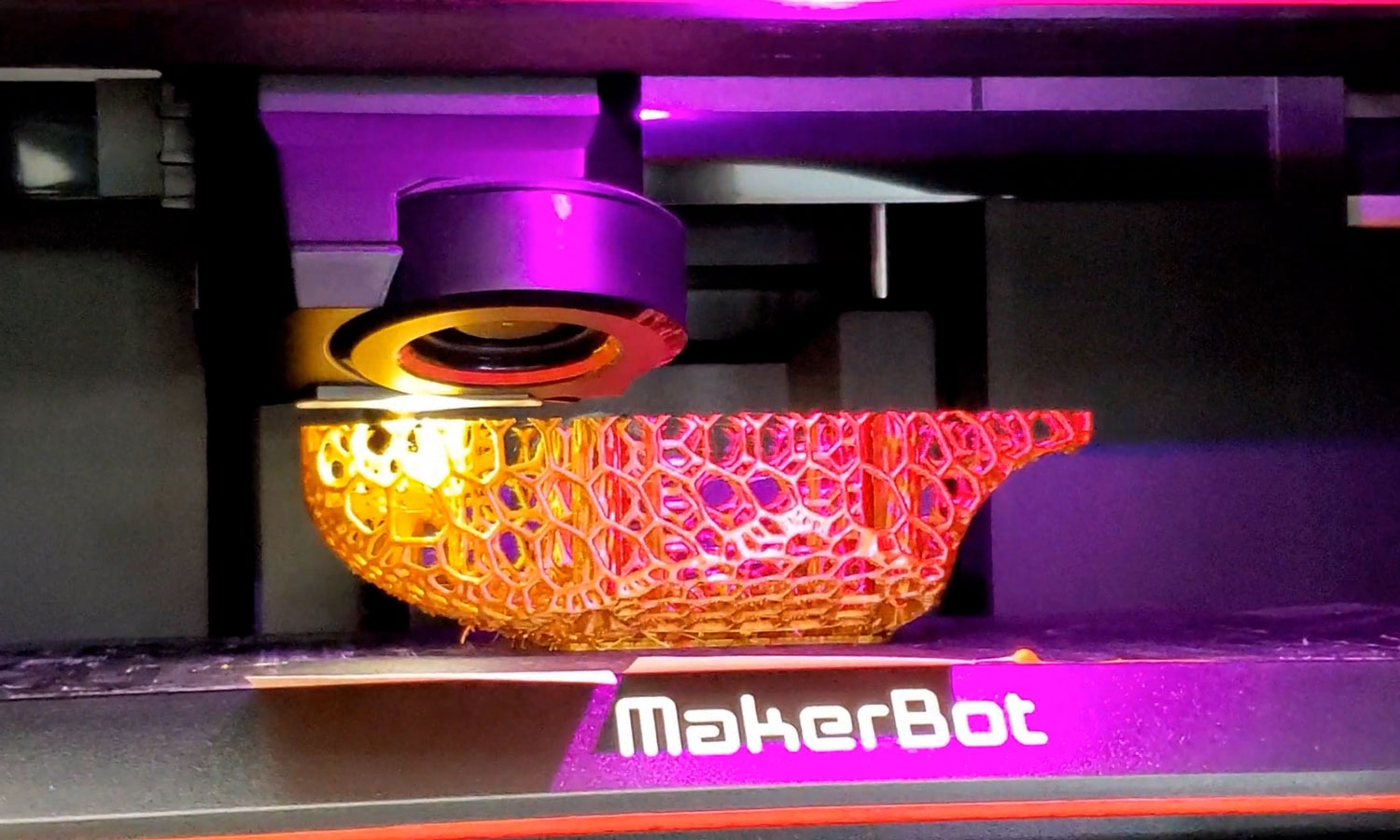An unmanned aerial vehicle created by VCU Engineering students to deliver cargo recently competed against similar UAVs from around the country in the 2021 Innovative Additive Manufacturing 3D Challenge.
The challenge, a program of the American Society of Mechanical Engineers (ASME), tasks student teams with designing and additively manufacturing an unmanned aircraft that makes five laps through an obstacle course, picking up and delivering one cargo payload per lap.
For this year’s competition, which is being held remotely, VCU’s team performed the competition flight in early March at Brown’s Island. ASME will announce the winners April 24 at its E-Fest engineering festival.
Since November 2020, building the drone has been the pet project of members of VCU’s ASME chapter. They have been working in teams focused on frame design, electronics, payload securing and flight operations. The competition required that the aircraft’s frame and casing be additively manufactured from original designs.
“We were looking for a project that would give us hands-on experience working as an actual engineering team,” said mechanical engineering major Adam Sweere, vice president of ASME at VCU. “We were inspired by other competition teams like Formula SAE and saw how much they had to collaborate to get ready for competition.”
The students dubbed their black-and-gold drone “VCU Hornet (Keith).” (There is no Keith; they just liked the name.) It measures about one foot across diagonally and weighs two pounds. All of its 3D-printed parts use topology optimization, a process that employs computer simulations to trim down the mass of the parts and, in this case, give the aircraft “a sort of ‘alien’ look,” Sweere said. They manufactured the parts in the college’s Mechanical and Nuclear Engineering Innovation Lab.
Sweere said the drone’s perforated shell helped to “decrease the weight, increase airflow — and it looks awesome!” He explained that the holes are an example of Voronoi design, which efficiently breaks a surface into organic subspaces — think of honeycombs, or the way bubbles cluster together.
The team constructed its own course with the required arch, slalom and payload bay obstacles.
The competition flight must take place in a local venue that meets Federal Aviation Administration guidelines for public recreational UAV flight, and Brown’s Island fit the bill. Sweere and teammates Anthony Rubio-Tonche, a mechanical engineering major, and John “Jack” Stonerock, an electrical engineering major, also became Federal Communications Commision-certified to operate the radio frequency transmitting devices required to fly the drone.
Although the competition is a test of accuracy, not speed, they knew they had a powerful aircraft during the test flights in students’ apartments.
“We were running our initial power tests with the drone strapped to my kitchen table,” Rubio-Tronche said. “When the paintings on the walls started to shake, we knew it was pretty strong.”
It was very windy at Brown’s Island when they did their competition flight. They made several test runs when they arrived — plus a few impromptu repairs with soldering irons hooked up to battery packs. See a test flight.
In the competition flights, “the drone functioned successfully, flew exactly the way we intended it to, had sufficient battery power, sufficient motor power and was very sturdy,” Sweere said.
Although stressful, they also found the day gratifying.
“We were flying for about four hours, up until sunset, with Adam and me taking turns piloting the craft,” Rubio-Tonche said. “I don’t know, there was just something cool about the whole scene. I never expected to be here doing something like this at this time.”
The competition flight is over, but the students said they are not finished with VCU Hornet (Keith) yet. For Rubio-Tonche, continuing to work on it is a way to support his knowledge of mechanical engineering and electronics, as well as his career goal to become an electric automobile engineer.
“The payload mechanism that we were working on also strikes me as very, very interesting because of the recent developments with shipping and how companies like Amazon are investing heavily in cargo-carrying drones to deliver their items,” he said.
Sweere said he thinks the drone will “definitely live on” as an inspiration for future ASME projects, and as “a great example of what additive manufacturing in engineering can do.” He wants to keep tweaking it “because it’s so close to perfect already” and hopes to show it off to others.
“There's so much more of the semester left. Maybe we could have other activity days where we just take out the drone and a few people can come out and see it and maybe fly it on low power settings,” he said. “That would be really cool.”
